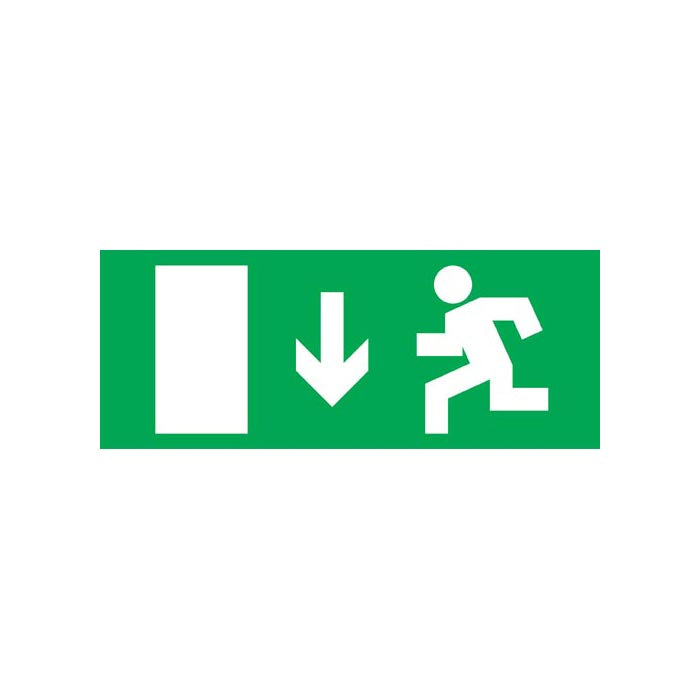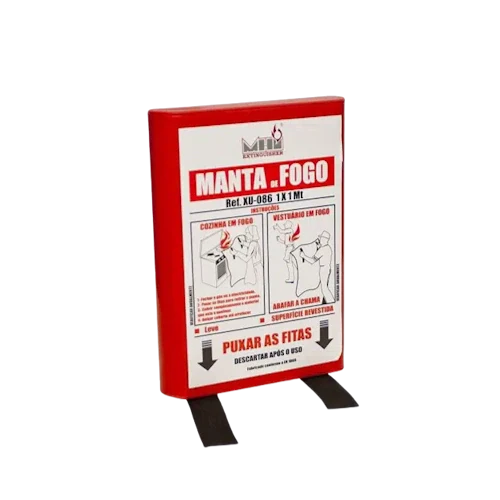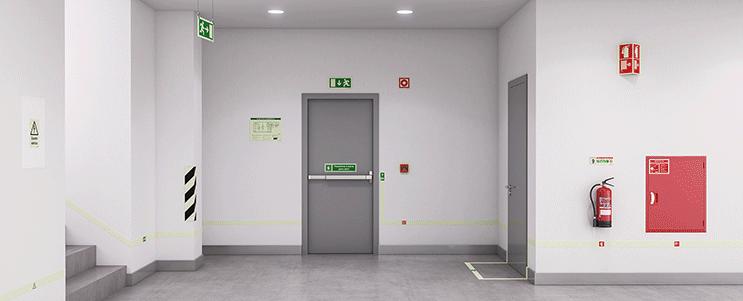
Signage
Share
![]()
In Portugal, safety signs are regulated by the "Fire Safety Regulations for Buildings" (RSIE), approved by Decree-Law No. 220/2008 of 12 November and updated by Decree-Law No. 224/2015 of 9 October, as well as by other complementary regulations. Safety signs are essential to guide and inform building occupants about prevention measures and procedures to follow in the event of an emergency.
Types of Signaling
-
Prohibition Signs :
- Indicates prohibited actions to avoid fire risks, such as smoking, lighting flames, among others.
-
Mandatory Signaling :
- Indicates mandatory actions to ensure safety, such as the use of personal protective equipment.
-
Alarm Signaling :
- Indicates the location of alarm and alert devices in case of fire, such as manual alarm buttons.
-
Firefighting Equipment Signaling :
- Indicates the location of fire-fighting equipment, such as extinguishers, hoses and fire hydrants.
-
Emergency Exit and Evacuation Signs :
- Indicates evacuation routes and emergency exits to ensure a quick and safe evacuation of the building.
-
Distress Signaling :
- Indicates the location of first aid equipment and facilities.
Signage Requirements
-
Visibility and Readability :
- Signs must be clearly visible and legible in all lighting conditions. They must be placed at a suitable height and location to ensure easy identification.
-
Color and Format Standards :
- Signs must follow specific color and shape standards. For example, prohibition signs are usually red, mandatory signs are blue, and emergency exit signs are green.
-
Material and Durability :
- Signs must be made of durable, fire-resistant materials, ensuring their effectiveness in emergency situations.
-
Illumination and Photoluminescence :
- In places where lighting may fail, it is recommended to use photoluminescent signage, which glows in the dark after being exposed to a light source.
Maintenance and Inspection
-
Regular Checks :
- Signage should be checked regularly to ensure it is in good condition and clearly visible. Damaged or faded signs should be replaced immediately.
-
Necessary Updates :
- Signage should be updated whenever there are changes to the building layout or emergency procedures.
Responsibilities
-
Owners and Managers :
- Building owners or managers are responsible for ensuring that safety signs are installed, maintained and inspected. They must also ensure that all building occupants are aware of the indications and instructions provided by the signs.
-
Supervision :
- The competent authorities are responsible for monitoring compliance with safety signage standards and may apply sanctions in the event of non-compliance.
Training
-
Awareness and Training :
- Regular training of building occupants on the meaning of safety signs and the procedures to follow in the event of an emergency is recommended.
These provisions are intended to ensure that all occupants of a building can quickly identify and follow safety instructions, minimising risks and facilitating safe evacuation in the event of an emergency. For specific details and updates, it is advisable to refer to the legislation directly or seek specialist advice.



